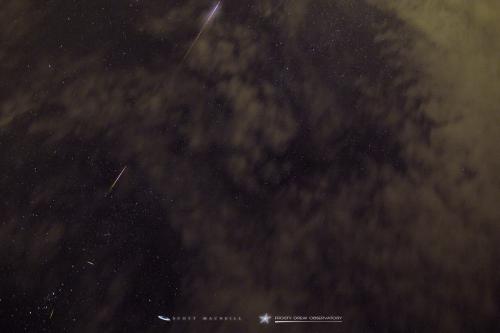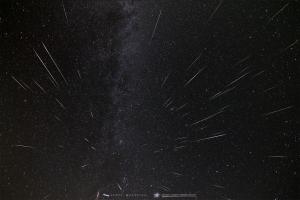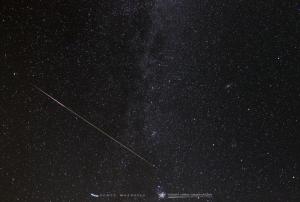The Perseids Are Ready to Rock
Remember that amazing meteor shower that happens in August? That is the Perseid Meteor Shower and it started on July 17th, making now the time to plan where you will be for the August 11-13th shower peak. Meteor activity will continue to increase as we close in on the peak dates with bright meteors becoming very frequent overnight. Add in that the New Moon occurs on August 11th and meteors will rock the sky unhindered by moonlight. All we need now is clear skies, late night stamina, and loads of enthusiasm to make for a stunning night of shooting stars.
The Perseid shower is the result of Earth passing through a debris field left behind by comet 109P/Swift-Tuttle. Discovered in 1862 by Lewis Swift and Horace Tuttle, comet 109P was identified as the source of the Perseid shower in 1865. The comet has a 133 year orbit around the Sun and made its last visit to the inner solar system in 1992.
Meteor showers are named after the constellation that their meteors appear to radiate from. This is called the "radiant point". The Perseid shower radiates from the constellation Perseus, visibly about half way between the constellations Perseus and Cassiopeia near the naked eye visible Perseus Double Cluster. Since Perseus will rise around sunset, the radiant point will be about 37º above the horizon at 1:00 a.m. on Sunday, August 12th and rising higher over the course of the night, eventually passing overhead. This places the radiant point at an excellent place for viewing.
With no Moon to contend with this year, both nights of the peak period will blaze forth meteor awesomeness. The best times to be out will be in hours around midnight until predawn sets in. Sunday night – Monday morning looks like the best time catch the most frequent meteor activity with up-to 100 meteors per hour dazzling the sky. It’s important to note that the Perseids put on a fantastic post-peak show that could last for a couple of weeks. So missing out on the peak nights will not put the shower completely out of reach.
Viewing the Perseid show is a cake walk. Grab a reclining lawn chair or a blanket and lay on your back looking towards the zenith (top of the sky). Since the Perseid radiant point is the top of the constellation Perseus, which will rise overhead from the northeast, orientate your body so your feet are towards the northeast. Meteors will be frequent and appear to originate from the radiant point.
Frosty Drew Observatory will open all night on Saturday, August 11th and Sunday August 12th for the Perseid peak. Starting at sunset, we will offer views of Saturn's rings, Jupiter’s moons, and more. Once meteor activity begins to increase, we will close the Observatory telescopes and make our way to the Observatory court yard where the Perseid shower will be taking off. We will stay on site until the pre-dawn Sun kicks us out, weather permitting. If weather favors us, the Milky Way will stretch across the sky adding to the beauty of a meteor filled starscape. So stop in during the Perseid Meteor Shower peak and enjoy a fantastic night out under a sky with shooting stars blazing by.
-Scott
- Author:
- Scott MacNeill
- Entry Date:
- Aug 8, 2018
- Published Under:
- Scott MacNeill's Columns




